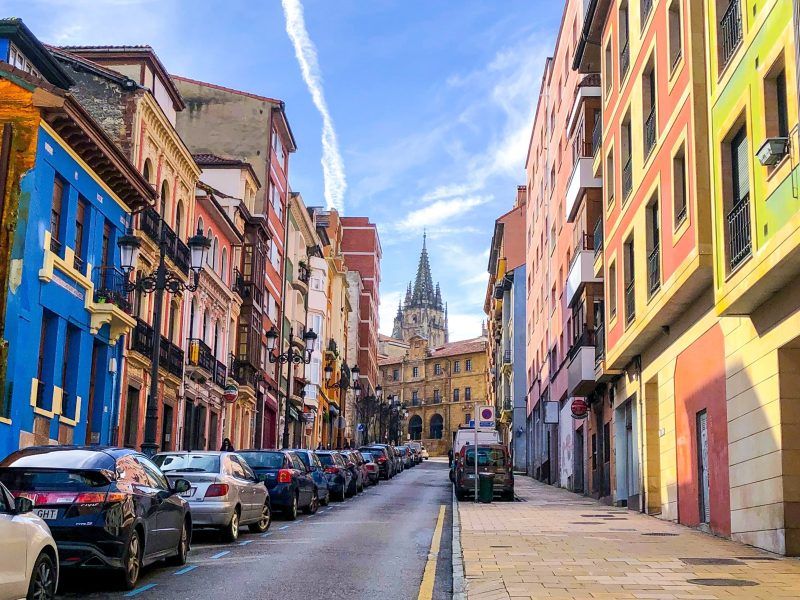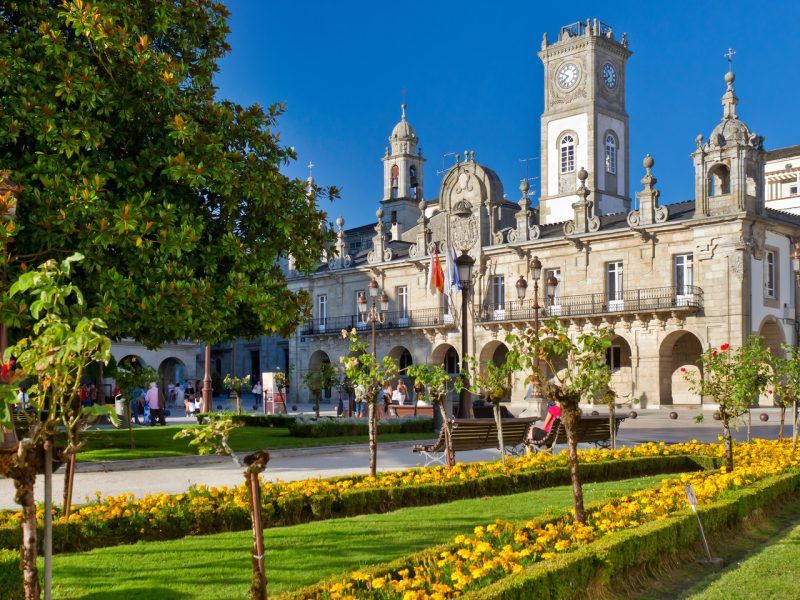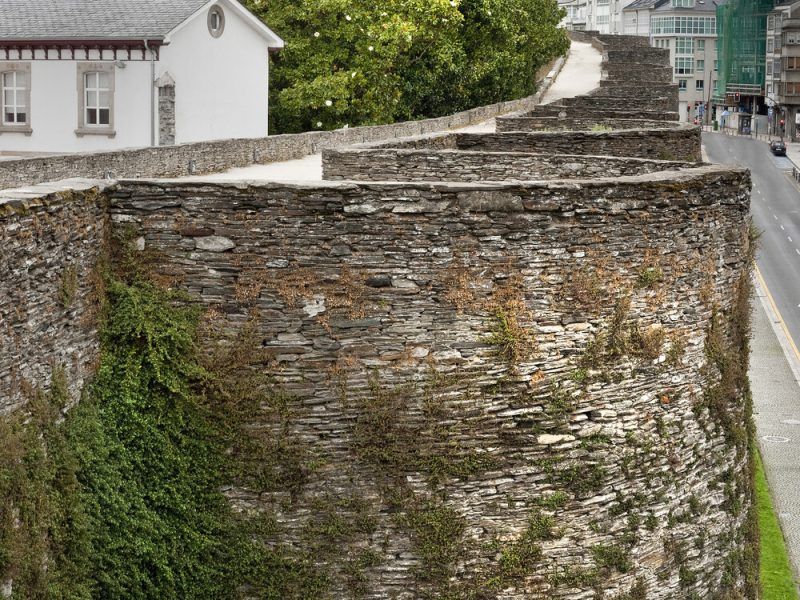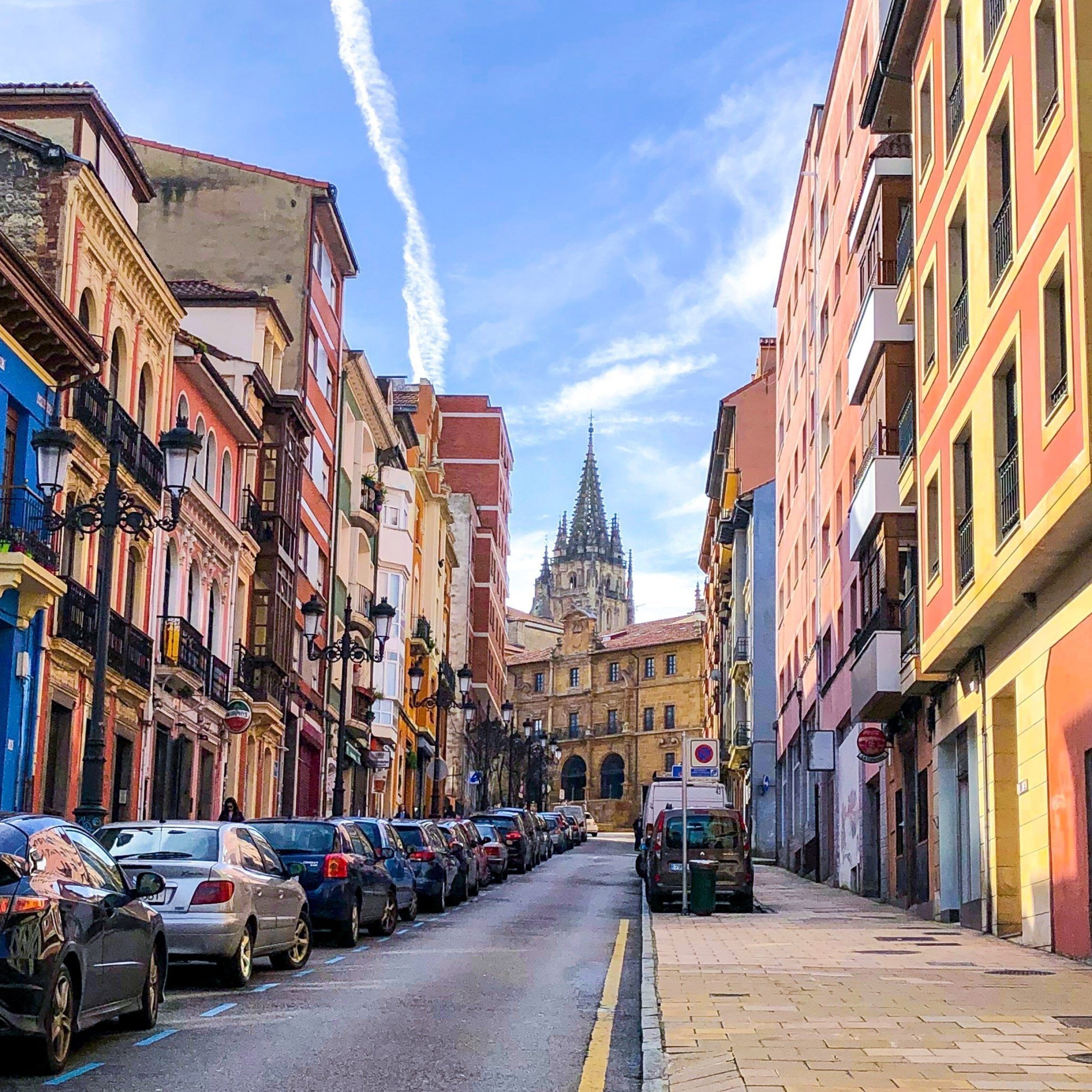The Camino Primitivo isn’t just any trail—it’s the original pilgrimage route that’s been guiding travelers to Santiago de Compostela for centuries. If you’re looking for a journey packed with history, culture, and jaw-dropping natural beauty, this is it. What makes the Camino Primitivo special is its quieter, more intimate vibe. It takes you through gorgeous landscapes and charming, centuries-old villages, giving you a real taste of authentic Spain. Every step feels like you’re walking through history, getting closer to the soul of this ancient tradition.
If you’re feeling adventurous, you can tackle the whole Camino Primitivo, starting in Oviedo and walking all the way to Santiago in about 16 days. But if you’re short on time, no worries! You can jump in at Lugo and still enjoy 7 days on the trail, soaking up the essence of this unforgettable pilgrimage.
The Timeless Appeal of the Camino Primitivo
The route offers a glimpse into the rich medieval history of Spain, where each step is steeped in stories of devotion, struggle, and community. As pilgrims traverse the rugged terrain of Asturias and Galicia, they connect with centuries of spiritual seekers who have walked this path, drawn by the same quest for meaning and connection.
Beyond its rich history, the Camino Primitivo has something even more special: a deep, spiritual pull that draws people from all over the world. It’s often described as a journey of self-discovery, where the challenges you face on the trail reflect the ups and downs of life itself. As you walk through breathtaking landscapes—whether it’s lush forests or towering mountains—you’ll find yourself naturally pausing to reflect and take it all in. The Camino Primitivo gives you the space to step away from the chaos of everyday life and dive into something more meaningful.
It’s not just about personal growth, either; along the way, you’ll form bonds with fellow pilgrims that make this journey feel like a shared, timeless experience. It’s a pilgrimage that touches the human spirit in ways that stay with you long after you’ve left the trail.
Oviedo Origins: Where Every Pilgrim’s Story Begins
Oviedo, the enchanting capital of Asturias, is where the journey along the Camino Primitivo traditionally begins, offering pilgrims a rich tapestry of culture and history to explore before they set out. This city holds a legendary status in the story of the pilgrimage, as it was from here in the 9th century that King Alfonso II of Asturias set out on the first journey to honor the newly discovered tomb of St. James. Oviedo’s connection to this ancient path is woven into the fabric of its history, embodying a time when Spain was forging its identity amidst political shifts and spiritual awakening.
Even today, walking through Oviedo feels like stepping into the footsteps of centuries of pilgrims, where tradition whispers from every stone, making it the perfect place to begin the sacred journey.

The Emotional Rollercoaster of the Camino Primitivo
Walking the Camino Primitivo is as much an emotional journey as it is a physical one. The route’s rugged terrain presents a series of challenges that test your endurance, like the demanding ascent to the Alto del Acebo, where steep inclines and unpredictable weather can push you to your limits. Yet, these physical trials often give way to profound emotional highs—moments when the stunning beauty of the Galician countryside or a quiet sunrise over the mountains fills you with a deep sense of accomplishment and peace.
Key Landmarks and Must-Visit Spots
What makes the Camino Primitivo so special is its deep historical significance and spiritual allure that has captivated pilgrims for centuries. The locations along the Primitivo are not just stops along the way; they are touchstones of history, each offering a glimpse into the lives of the countless souls who have walked this path before. Here are some highlights along the Camino Primitivo:
- Oviedo Cathedral: The journey begins in Oviedo, where the Cathedral of San Salvador stands as a cornerstone of pilgrimage history. This Gothic masterpiece houses the Cámara Santa, a chapel that holds sacred relics and treasures from the medieval period, reflecting the city’s pivotal role in the early pilgrimage to Santiago.
- San Julián de los Prados: Just outside Oviedo, this Pre-Romanesque church, a UNESCO World Heritage site, offers a glimpse into early Christian art and architecture. Its well-preserved frescoes and intricate design showcase the artistic heritage of Asturias from the 9th century.
- Grandas de Salime: This picturesque village is known for its scenic views and the nearby Salime Reservoir. It serves as a resting point where travelers can appreciate traditional Asturian culture and enjoy the tranquil beauty of the surrounding landscape.
- Lugo’s Roman Walls: One of the most striking historical sites on the Camino Primitivo is the city of Lugo, renowned for its remarkably intact Roman walls. These ancient fortifications, which encircle the old town, have stood for over 2,000 years and offer a tangible connection to the past.
- Melide: Near the end of the Camino Primitivo, Melide is famous for its traditional Galician cuisine, particularly the local dish “pulpo a la gallega” (Galician-style octopus). The town provides a final opportunity to immerse yourself in the regional flavors and culture before reaching Santiago.
While the Camino Primitivo may not offer the same variety of landscapes as longer routes like the Camino Francés, its natural beauty is no less stunning. The route takes pilgrims through lush forests, rolling hills, and alongside babbling streams, all blanketed in the vibrant greenery that has become a hallmark of the Asturian and Galician countryside. This verdant landscape, punctuated by the occasional medieval town or church, forms the backdrop for the transformative journey of the Camino Primitivo.


Essential Tips for Navigating the Camino Primitivo
Navigating the Camino Primitivo requires thoughtful preparation, as the rugged terrain and remote locations demand a bit more planning than other Camino routes. Experienced pilgrims suggest packing light but wisely—focus on high-quality hiking gear, including sturdy boots, a comfortable backpack, and weather-appropriate clothing. Given the unpredictable weather in the mountains, layering is key, as well as packing a good rain jacket.
When it comes to dining, be prepared for long stretches without many options, especially in more remote areas. Pilgrims often recommend carrying snacks like nuts, dried fruit, and energy bars for those times when the next village feels a bit too far away. Many also advise stopping at local markets to sample regional specialties and replenish supplies.
Accommodation can fill up quickly, so planning ahead definitely helps secure a spot in the albergues. Finally, remember that the Camino Primitivo is as much about the journey as the destination, so take your time, savor the experience, and don’t be afraid to connect with fellow travelers along the way.
Why the Camino Primitivo Might Just Change Your Life
The Camino Primitivo’s rugged beauty and rich history provide a backdrop for meaningful encounters and personal revelations, making it a journey that often leaves a lasting impact on one’s life. Many pilgrims find that the solitude of the trail and the camaraderie with fellow travelers help them gain a new perspective on life, revealing inner strengths and sparking a renewed sense of purpose. The Camino Primitivo is more than just a physical journey—it’s a transformative experience that can lead to profound personal and spiritual growth. The challenges you face, from the demanding climbs to the solitary moments of reflection, offer opportunities for deep introspection and self-discovery.
If you’re ready to experience this life-changing adventure for yourself, consider booking your Camino Primitivo journey with WAW Travel. Our expert guidance and personalized services can help ensure that your pilgrimage is both memorable and fulfilling. Should you have any questions, feel free to reach out at [email protected].



Comment (0)